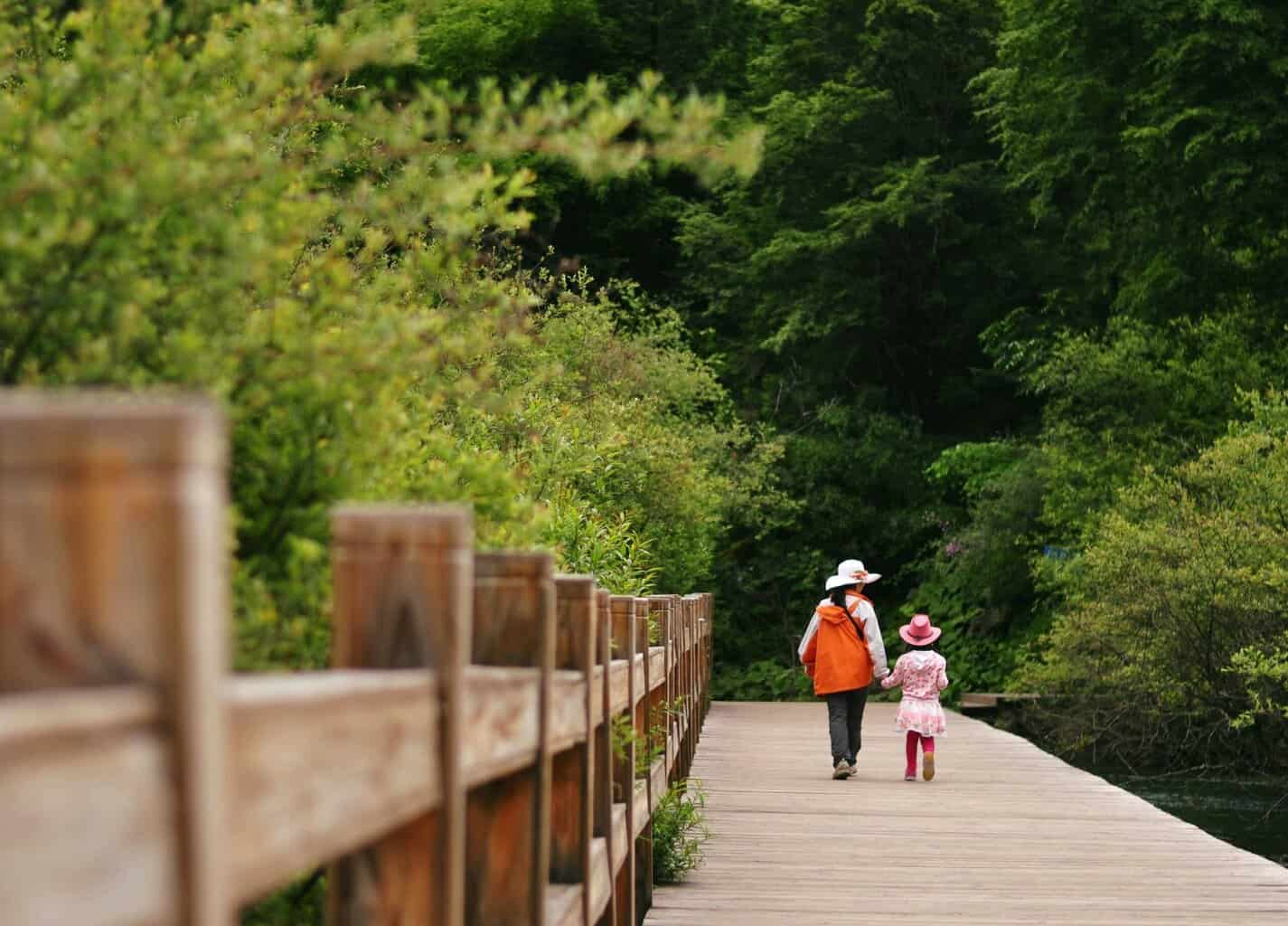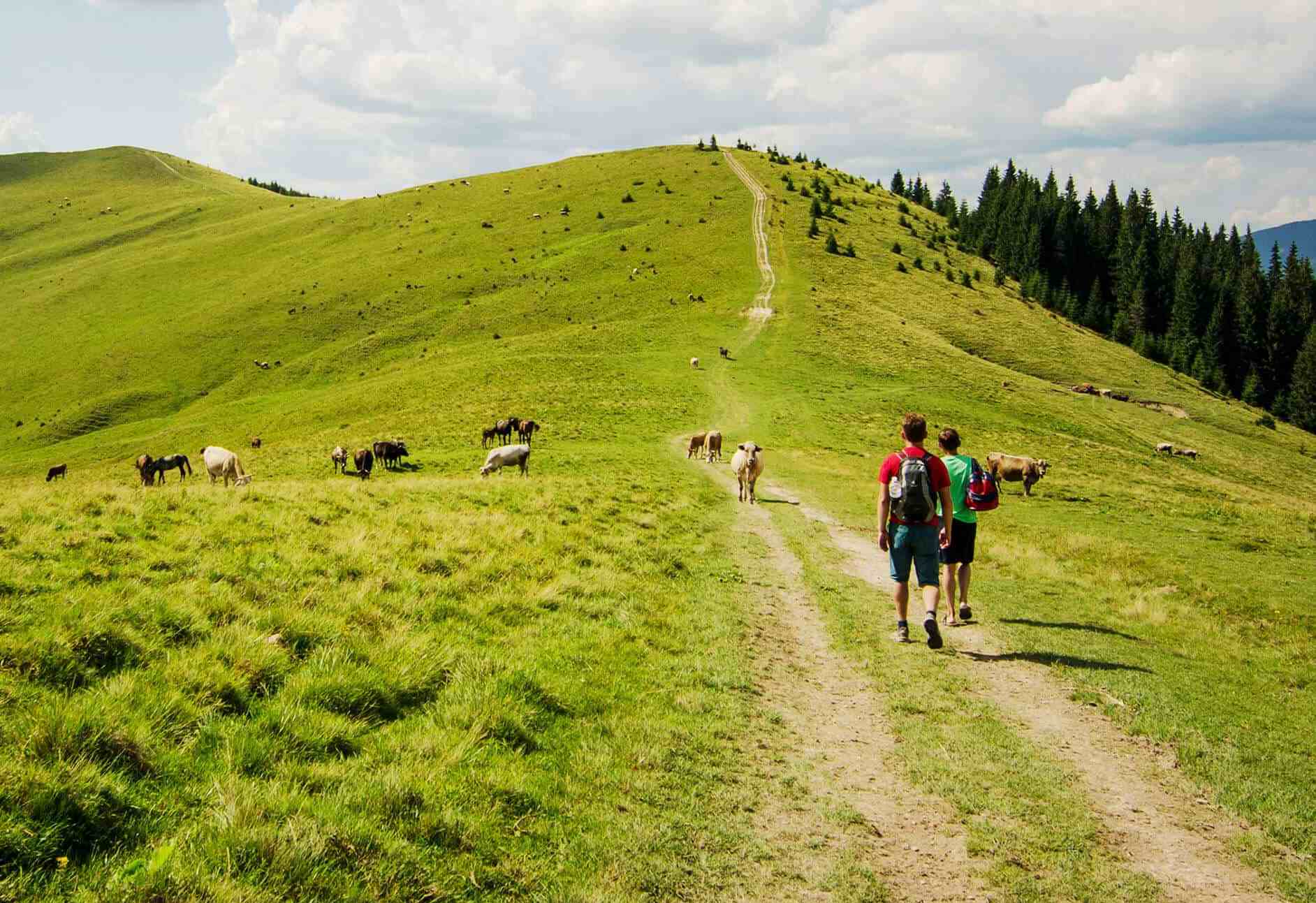The Camino Frances extends from Saint Jean Pied de Port in southwest France to Santiago de Compostela in Spain and is said to be a journey of three stages. The three distinct geographical regions along the route correspond to the 3 stages of personal growth often experienced along the journey. These include physical conditioning, emotional reflection and spiritual awareness.
Written by Glenda Barry
The Physical Journey to Personal Growth on the Camino

The first portion of the French Route consists of rugged, exposed mountains; steep, wooded hills, and fertile river valleys and lowlands extending from Saint Jean Pied de Port to Burgos. This is a landscape that tests and conditions the body in equal measure. For every sublime moment of sun-drenched well being there is an inversely correlated moment of pain-hazed doubt.
Thus, many pilgrims’ main concern is acclimatising to the physical demands of long-distance walking.
But the human body is designed for bipedal motion. Walking has carried us, as a species, from the cradle of civilisation to the far corners of the earth. Most of us have been doing this since we were a year old. It’s only one foot in front of the other. How hard can it be?
The Physical Challenge of the Camino
On the Camino and the “doctor recommended” 10,000 steps per day becomes 25,000, 30,000, 35,000 steps. We do this on day one and gratefully collapse into our beds. Then we get up and walk that number of steps again the next day. And the next. And the next. By day three our bodies whimper for mercy. On day four we can pass hours of walking by casually observing the shifting of ache from ball of the foot to knee to hip to arch.
By day five blisters appear, as predictable as an excellent cup of coffee each morning and the snoring pilgrim in the next bunk each night.
But then the body, by some small Darwinian miracle, adapts. The aches subside. The blisters heal. And imperceptibly, as we pass over the mountains and rivers and medieval bridges, through the sunrises and conversations and glasses of wine, muscles begin to take on new definition. The gait becomes more relaxed and confident. The load feels lighter as we shed what is unnecessary and grow stronger. Walking becomes as rhythmic as breathing.
The Emotional Journey to Personal Growth

The cathedralled cities of Burgos and Leon bookend the second stage of the Camino Frances. Between them lies the vast, treeless expanse of the Meseta. This central region encompasses the most uninhabited stretch of the Camino and thus provides an abundance of space and solitude.
By the time we enter Burgos, after nearly two weeks of walking, the body has largely adjusted to our nomadic routine. Any remaining aches gradually settle into the realm of background noise, and the long vistas of wheat fields stretching to the horizon allow the mind to wander and drift inward. All is a gentle, visually undemanding sea of green. But beware, here be dragons.
Taking On the Meseta – an Emotional Challenge
On the Meseta one battles not only long distances between villages and extreme summer heat but also loneliness, boredom, uncertainty and the hundred other emotions that inhabit the human psyche.
In our busy day-to-day lives, we push the strains and uncertainties that we can’t find a way to resolve to the back burner. We unconsciously hold in feelings of fear, doubt, sorrow, and regret because they are either unpalatable or intractable. But after hundreds of kilometres, the body has been broken down and reformed. And in that breaking, we enter a terra incognita where the problems we have held in can begin to seep out.
Each person’s reaction to this is different. Some bypass this section by bus. Others hire a bike to cover kilometres quickly. Some amble and reflect with serenity while others ponder or cry or rage. Every journey, inwardly and outwardly, is different.
Many people choose to walk the Camino at points of transition in their lives to allow themselves the luxury of time and motion and silence to help stimulate the personal growth they seek. This space creates an opportunity to breathe deeply, gain perspective and heal.
The sight of pilgrims brimming with joy and brimming with tears are both commonplace. However, the joy, support, and camaraderie that develops between fellow travellers creates an environment of acceptance of both ourselves and others and stands as one of the beautiful and rewarding characteristics of the Camino.
The Spiritual Journey to Personal Growth on the Camino

As we leave Leon we return to the world of mountains and forests. Galicia beckons with its misty, Celtic world of chestnut woods, stone walls and bovine companions. As we climb toward the highest part of our journey at Cruz de Ferro, our world descends from the head to the heart, from thinking to feeling.
The body is finely tuned. The mind has emerged from its pondering and becomes still. Now there is time to experience and to be fully aware of the surrounding beauty without bodily distraction or mental analysis. We have broken ourselves down, emptied our minds and created a wealth of space within us. It is freedom and wonder at its most sublime, it is the epitome of personal growth.
While the terrain is challenging and visually stimulating, a sense of physical vitality, clarity of thought, and wholeness of heart permeates days and conversations. We have struggled with and been blessed by the journey. The destination is in sight. We travel with little but we are wealthy beyond compare.
Simon Barnes of The Sunday Times wrote that “The world is full of attainable miracles. Life in the 21 century is like being perpetually stony broke, unaware you have a pocketful of diamonds”. The beauty and essence of miracles is in their unexpectedness but also, frequently, in their subtlety. We breathe deeply, smile, are grateful that we finally made it. Surrounded by friends, we are, at our most filthy and tattered, bathed in beauty and love. Diamonds indeed. While we may have started our journeys as walkers, we find, as we reach Santiago, that we end them as pilgrims.







